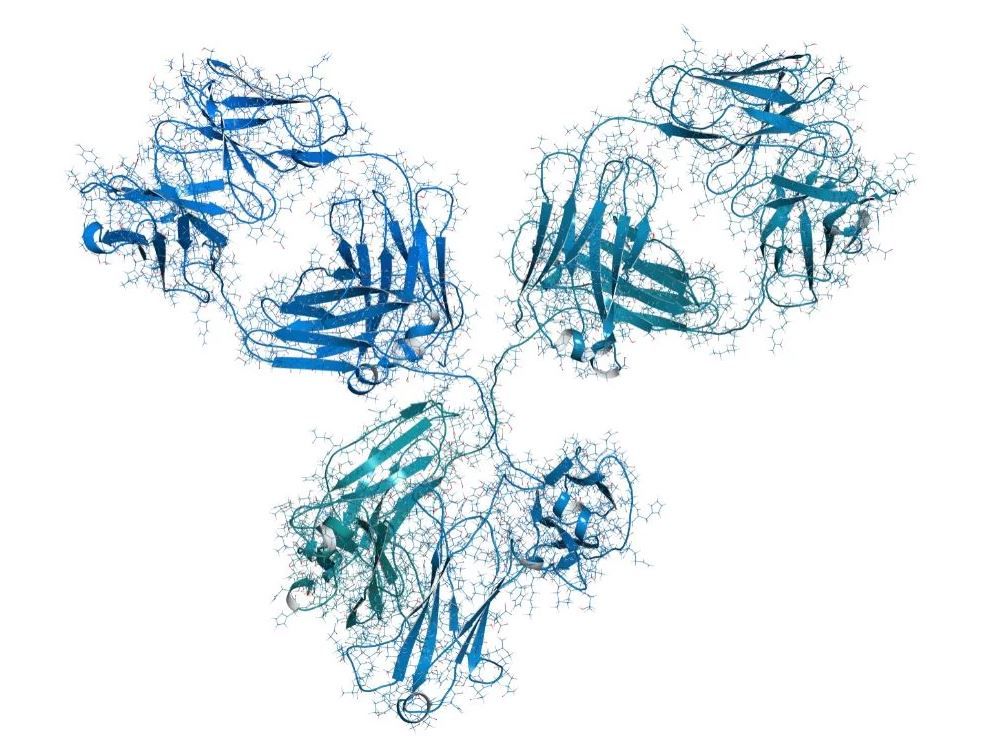Dupilumab, Tezepelumab Gain Ground for Severe Asthma but Overall Biologic Adherence Rates Found Low: 2 Studies from 2025 AAAAI/WAO
AAAAI 2025. One study found the 2 newer biologics have been prescribed more frequently while the other suggests asthma treatment may not be optimal or even consistent.
Tezepelumab
(©molekuule.be/stock.adobe.com)
(©molekuule.be/stock.adobe.com)

The landscape of biologic therapy for severe asthma (SA) in the United States has shifted significantly in recent years, with newer agents such as dupilumab and tezepelumab now leading in treatment initiations, according to an abstract presented at the 2025 American Academy of Allergy, Asthma, & Immunology and World Allergy Organization, February 28 – March 3, 2025 in San Diego, CA.
A second set of findings, however, presented during a late-breaking abstract session at the meeting, suggests that overall adherence with the 6 FDA-approved biologic agents after an initial prescription is low, on average less than 15%, the study authors reported. While the 2 studies cannot be directly compared, the trends documented in each provide a foundation for additional research that could help further support individualized treatment.
CHRONICLE1
Findings from the ongoing CHRONICLE study (NCT03373045), an ongoing real-world observational analysis of adults with SA, reveal notable declines in the initiation of older biologics, coinciding with the introduction of newer options.
CHRONICLE participants have received biologics, systemic corticosteroids, or other systemic immunosuppressants for at least half of the previous 12 months or have SA this is uncontrolled despite receiving high-dose inhaled corticosteroids with additional controllers. For participants enrolled between February 2018 and February 2024, clinicians at participating sites reported medication use every 6 months beginning 12 months before enrollment. Researchers summarized initiation of biologic therapy both descriptively overall and for each site by each half-year (1H: January–June, 2H: July–December), according to the study abstract.
Among 4,037 enrolled patients, 65% (n = 2,612) received biologic therapy. Between the second half of 2018 (2H-2018) and 2H-2023, initiation rates declined for benralizumab (42% to 16%), mepolizumab (21% to 9%), omalizumab (26% to 7%), and reslizumab (3% to 1%). Meanwhile, the use of dupilumab increased from 8% to 39%, and tezepelumab rose from 0% to 29% over the same period. By 2H-2022 through 2H-2023, initiation rates for dupilumab (34%) and tezepelumab (33%) were nearly identical, signaling their growing dominance in severe asthma management.
Trends at the site level mirrored patient-level patterns, reinforcing the shift in prescribing behavior. These changes in biologic initiation rates align with the expanding therapeutic landscape, as newer agents receive approval and demonstrate efficacy in broader patient populations. These findings underscore the importance of ongoing research to assess long-term outcomes and optimize biologic selection for individual patients.
USOptum Market Clarity Analysis2
The cross-sectional cohort study analyzed USOptum Market Clarity data (2007 to 2023) for adults with a diagnosis of asthma within 12 months of the first administration of 1 of 6 approved biologic drugs and at least 12 months of follow-up. Use of the 6 agents among the final cohort of 10 088 was: omalizumab (n = 5048), dupilumab (n = 2096), mepolizumab (n = 1545), benralizumab (n = 1301), reslizumab (n = 84), and tezepelumab (n = 14).
Overall adherence was low, with approximately 20% of participants receiving only the initial dose and an average medication possession ratio (MPR) across all 6 biologics ranging from 21.9% to 41.1%. Among the 7,931 patients receiving 1 or more follow-up dose, MPR increased to between 30.1% and 50.3%.
Heatmap analyses illustrated frequent intermittent adherence, with some patients resuming biologics after extended gaps. Group-based trajectory modeling (GBTM) identified 8 distinct adherence patterns among 9,553 patients who remained on a single biologic throughout follow-up. These patterns included consistent adherence, early discontinuation, initial-dose-only adherence, and U-shaped trajectories, highlighting the diverse ways in which patients engage with biologic therapy.
The authors conclude that the diversity of adherence patterns identified in the study highlights “the need for better data collection, adherence monitoring, and barrier mitigation. Insights from these findings may guide personalized interventions to improve long-term asthma management,” they stated.
References:
1. Chipps B, Soong W, Ledford D, et al. Evolution of real-world biologic use among adults with severe asthma treated by United States subspecialists: results from the CHRONICLE study Abstract presented at: 2025 American Academy of Allergy, Asthma, & Immunology and World Allergy Organization; February 28 – March 3, 2025; San Diego, CA. Accessed February 12, 2025. https://www.jacionline.org/pb-assets/Health%20Advance/journals/ymai/AAAAI_2025_February28-1738868845313.pdf
2. Low adherence to current biologic therapies in asthma: insights from a retrospective cohort analysis of claims data. Abstract presented at: 2025 American Academy of Allergy, Asthma, & Immunology and World Allergy Organization; February 28 – March 3, 2025; San Diego, CA. Accessed February 12, 2025. https://www.jacionline.org/pb-assets/Health%20Advance/journals/ymai/AAAAI_2025_LateBreaking_Abstracts-1738868845707.pdf